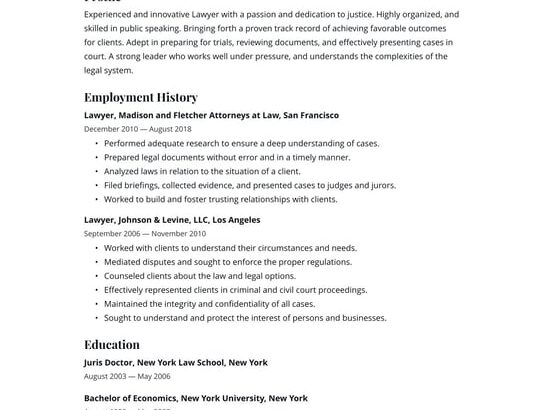The allure of PRP is that it may deliver a naturally balanced ratio of growth factors to the injured area. It also eliminates concerns of rejection or disease transmission.
During the procedure, your doctor will draw a small sample of blood and put it in a machine (centrifuge) to separate the platelet-rich plasma. This is then injected into the injured area using ultrasound guidance. Contact Prp San Siego now!

PRP has been a topic of fascination and a popular treatment for musculoskeletal injuries and diseases, and it may help reduce pain from chronic injury or disease. The procedure uses concentrated platelets and growth factors to stimulate your body’s natural healing processes, including reducing inflammation and boosting collagen production. PRP is also used to rejuvenate the skin, which can lead to a healthier and more youthful appearance.
Your doctor creates the platelet-rich plasma by drawing a few vials of blood from your body and placing them in a machine called a centrifuge, which spins the vials extremely fast. As the vials spin, the different components of your blood separate—including red blood cells, white blood cells, and plasma. Doctors then use the platelets from the plasma to inject into your injured area. They may also add substances such as thrombin or calcium chloride to the injection mixture to help the platelets work faster.
Researchers have found that the use of PRP can boost healing in ligament and tendon injuries, and it can decrease symptoms and delay or decrease the need for surgery. The growth factors contained in the platelets activate tenocyte proliferation and enhance collagen formation, which may contribute to improved tendon elasticity and strength. It can also decrease inflammation and speed up wound and tissue healing.
In addition to the treatment of muscle strains, tendinopathy, and ligament injuries, PRP has been shown to improve knee osteoarthritis by reducing cartilage degeneration. It can also accelerate bone and joint repair by decreasing arthritic inflammation, enhancing cartilage regeneration, and increasing synovial fluid lubrication, which improves movement and lessens pain.
Another benefit of PRP treatment is that it can decrease bruising and swelling following surgery. It may also be useful in minimizing the amount of pain medication needed, especially opioids.
Before getting PRP treatments, it’s important to avoid any medications that thin the blood, such as aspirin and ibuprofen. Your doctor will provide you with specific instructions about what to do before and after the procedure. They may suggest wearing a compression garment to keep your injured area stable while it heals. You’ll need to take it easy after the procedure and continue with physical therapy, which can help speed up your recovery time.
Preparation
Platelet-rich plasma (PRP) is a concentrated mixture of your own blood that contains high concentrations of growth factors and platelets. This helps stimulate the healing process and is particularly useful in tendons and ligaments. PRP can be injected directly into the affected area to speed up your healing.
To prepare the PRP, a small sample of blood is taken from your body and then centrifuged. This separates the platelets from other blood cells and increases their concentration. The platelets contain proteins called cytokines that help the blood clot and activate other cells in your body to heal the injured area.
There are numerous methods for preparing PRP, and each laboratory must devise a standardized protocol to ensure consistent results. The choice of anticoagulant and resuspension media are two critical initial steps, but the exact centrifugation conditions are important as well. The centrifugation force, speed and number of spins can all have a major impact on the platelet concentrate concentration and viability.
In the current study, we tested several variations in the PRP preparation protocol to determine if these parameters would influence the platelet recovery rate and the percentage of active platelets. In addition, we measured the concentration of platelet-derived VEGF using an ELISA assay. The results of this research show that the choice of anticoagulant and resuspension medium have a significant impact on the amount of VEGF present in the PRP.
The experimental procedure involved drawing blood from the patient and then centrifuging it to separate the platelets from other blood cells. The first centrifugation step was a “soft” spin that separated red blood cells from the plasma. The second, or “hard” spin, separated platelets and buffy coat from the plasma and erythrocytes.
We found that a higher centrifugation acceleration (3,000 x g) for the second spin resulted in lower levels of VEGF. This result suggests that the concentration of VEGF depends on the centrifugation conditions used to prepare PRP. Consistent nomenclatures for describing PRP preparations and standardized protocols to obtain a homogeneous product are needed to improve the comparability of clinical trials.
Procedure
The procedure starts with a medical professional drawing some blood. They then place it into a centrifuge, which separates the plasma from other components of your blood. The plasma contains a higher-than-normal concentration of platelets, which are responsible for clotting and promoting healing in your body. The process is quick and relatively painless. You may experience some bruising or soreness, but it should go away within a few days.
Once the doctor has prepared the plasma, they inject it into the area being treated. They might use imaging technology to help guide the needle into the area. This entire process can take up to an hour. You should avoid taking NSAIDs in advance of the injection, as they can interfere with your platelet function.
Platelet-rich plasma can be used to treat a wide range of conditions. It can be helpful in treating musculoskeletal injuries, such as tendonitis and osteoarthritis. In addition, it can be used to treat hair loss. It is a great alternative to surgery, which can be expensive and dangerous for some patients.
PRP is also effective in treating inflammatory diseases, such as rosacea and acne. It is often injected into the forehead, cheeks, and neck, where it can reduce redness and restore volume to the skin. It can also be used to treat scars and wrinkles.
Because PRP is made from your own blood, it’s safe for most patients. However, there is a risk of infection and allergic reaction. Additionally, the plasma may contain traces of blood or fat.
Despite these risks, PRP injections are still widely used in the United States and around the world to treat many different medical problems. The results are often better than those of conventional treatments, including cortisone injections. However, more research is needed to understand why some people have a greater response to PRP than others. It could be due to variations in the plasma concentration, patient age and other comorbidities, or healing capabilities. The plasma can also vary by the manufacturer and method of preparation, so doctors should perform an extensive quality control process before using it for patients.
Recovery
Platelet-rich plasma is a natural therapy that uses your own blood to help heal your injuries. The treatment has many benefits and is often used to treat musculoskeletal conditions such as tendonitis, tennis elbow, ligament sprains and muscle strains.
To perform the procedure, a healthcare professional draws a small sample of your blood under sterile conditions. The blood is then put in a centrifuge machine, which spins at high speeds to separate the platelets and plasma from other blood components. The resulting solution contains concentrated platelets and healing growth factors that can accelerate the healing process.
Once the PRP has been prepared, your doctor will inject it into your injury site under sterile conditions. Injections are typically done under a local anesthetic to minimize discomfort.
You may experience some pain and stiffness in the injection area after the procedure. The pain should subside within a few days and should improve as the healing process progresses. To ease the discomfort, you can apply a cold compress to the area several times a day. To avoid aggravating the injection site, you should also refrain from taking anti-inflammatory medications like aspirin and naproxen.
Recovery from PRP injections is highly variable, depending on a number of factors including your individual body’s cellular regeneration capabilities. Your age and overall health can also impact your healing process. For example, older individuals typically take a longer time to recover from injuries than younger people do. Moreover, people with certain medical conditions such as diabetes can have slower healing rates.
Unlike steroid injections, which can reduce inflammation in the short-term but inhibit the body’s natural regenerative process, PRP injections activate the tenocytes in your injured area to heal it naturally with fewer side effects. The treatment may be able to help you avoid surgery for musculoskeletal injuries such as osteoarthritis and rotator cuff tears.







